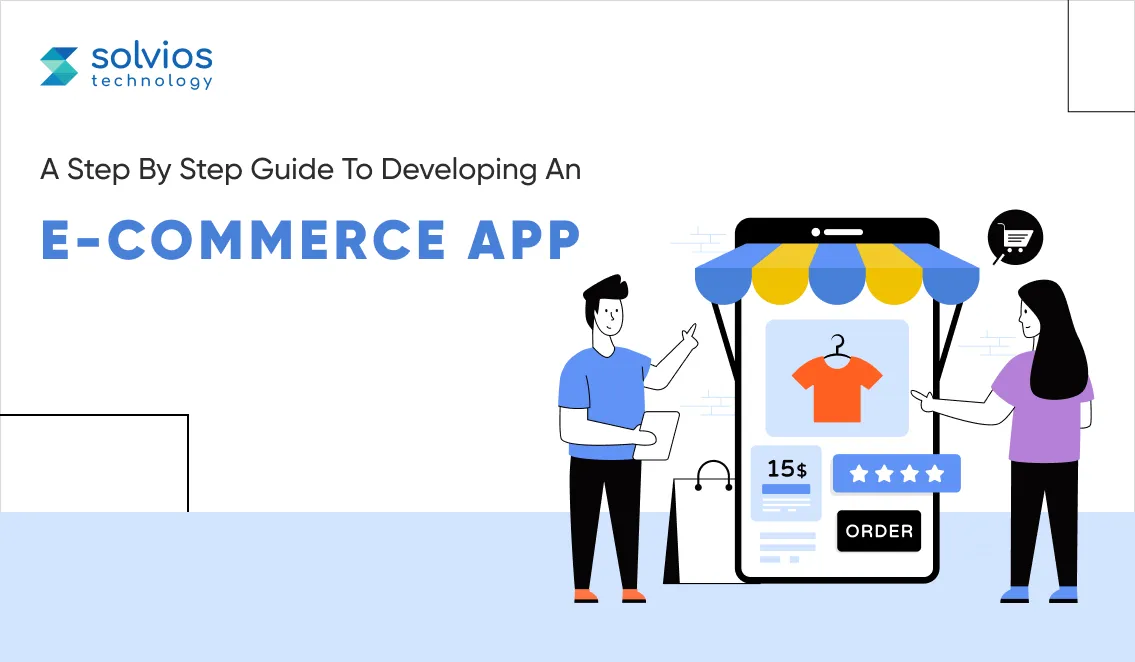
Today, having a robust eCommerce mobile app is inevitable for businesses looking to achieve success in the competitive online marketplace. With the increasing dependency on smartphones for shopping, developing an eCommerce app has become a necessity for retailers aiming to reach and engage with their customers effectively.
In this guide, we will take you through the step-by-step process of developing your own eCommerce mobile app, from conceptualization to launch.
E-commerce App Development
Developing an eCommerce mobile app involves several key steps, each essential for ensuring a seamless user experience and maximizing your app’s potential.
Here’s a Breakdown of the Development Process
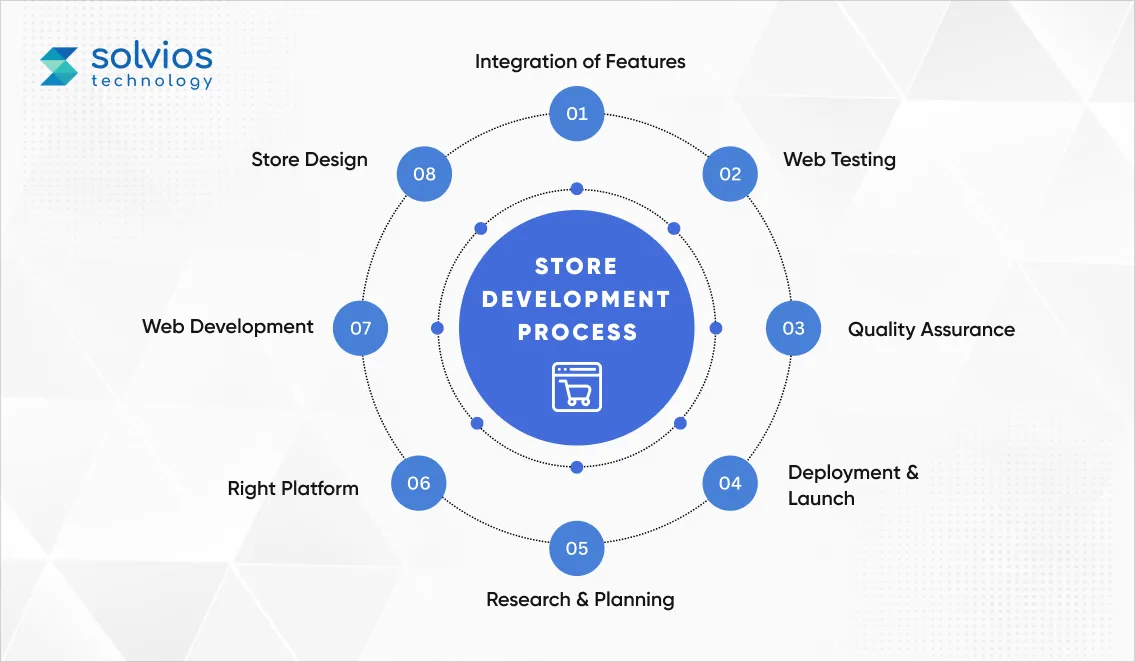
- Planning and Research: Before diving into development, do comprehensive market research to understand your target audience, competitors, and industry trends. Define your app’s objectives, features, and functionality to align with your business goals.
- Choosing the Right Platform: Decide whether you want to build a native app for iOS, or Android, or opt for a cross-platform solution. Consider factors such as target audience demographics, budget, and development timelines when deciding.
- Development and Design: Collaborate with experienced app developers and designers to create a user-friendly interface and intuitive navigation flow. Focus on optimizing speed, performance, and security to enhance the overall user experience.
- Integration of Features: Incorporate essential eCommerce features such as user onboarding, registration, product browsing, cart management, secure checkout, payment gateways, order tracking, and push notifications to keep users engaged and informed throughout their shopping journey.
- Testing and Quality Assurance: Conduct rigorous testing across different devices, operating systems, and network conditions to identify and address any bugs, glitches, or compatibility issues. Ensure seamless functionality and an intuitive user experience across all platforms.
- Deployment and Launch: Once your app is thoroughly tested and polished, submit it to the respective app stores like Apple Store or Google Play Store for review and approval. Implement an effective marketing strategy to generate buzz and drive downloads upon launch.
Must-Have eCommerce Application Features

- User Onboarding: Simplify the registration process with social media integration or one-click sign-up options.
- Product Catalog: Showcase your products with high-quality images, detailed descriptions, and intuitive search and filter options.
- Shopping Cart: Allows users to add items, view cart contents, and easily modify quantities or remove items as needed.
- Secure Checkout: Implement robust security measures such as SSL encryption and PCI compliance to protect user data during the checkout process.
- Payment Gateways: Offer multiple payment options, including credit/debit cards, digital wallets, and alternative payment methods, to accommodate diverse customer preferences.
- Order Tracking: With real-time updates on order status and shipment tracking, you can keep customers informed and reduce inquiries.
- Push Notifications: Send personalized notifications to alert users about promotions, discounts, order confirmations, and abandoned carts to re-engage and encourage conversions.
How to Create an Ideal eCommerce App Design
- User-Centric Design: Prioritize user experience (UX) and user interface (UI) design to create an intuitive and visually appealing app interface.
- Responsive Layout: Optimize your app’s design for various screen sizes and resolutions to ensure compatibility across devices.
- Consistent Branding: Maintain consistent branding elements such as colors, fonts, and logos to reinforce brand identity and recognition.
- Intuitive Navigation: Streamline navigation with clear menus, categories, and breadcrumbs to help users easily find products and navigate through the app.
- Visual Hierarchy: Use visual cues such as contrast, spacing, and typography to guide users’ attention and highlight important content and actions.
The Best eCommerce Apps

- Amazon: The world’s largest online retailer offers a vast selection of products, fast shipping, and convenient shopping features such as one-click ordering and Amazon Prime membership benefits.
- eBay: A popular marketplace for buying and selling a wide range of new and used items, eBay offers auction-style listings, fixed-price sales, and buyer protection policies.
- Walmart: Known for its everyday low prices and wide assortment of products, Walmart’s eCommerce app provides seamless integration with its brick-and-mortar stores, offering options for in-store pickup and delivery.
E-commerce Store App Development Cost Estimates
The cost of an eCommerce mobile app development varies depending on platform choice, features, complexity, and development resources. On average, the development cost for a basic eCommerce app ranges from $10,000 to $50,000, while more complex apps with advanced features can cost upwards of $100,000 or more.
7 Deadly Mobile App Development Mistakes
Find Your Answers!Customer Engagement and Retention Strategies
Once your eCommerce mobile app is live, it’s crucial to focus on customer engagement and retention strategies to maximize user satisfaction and drive repeat purchases.
Here are Some Effective Strategies to Consider
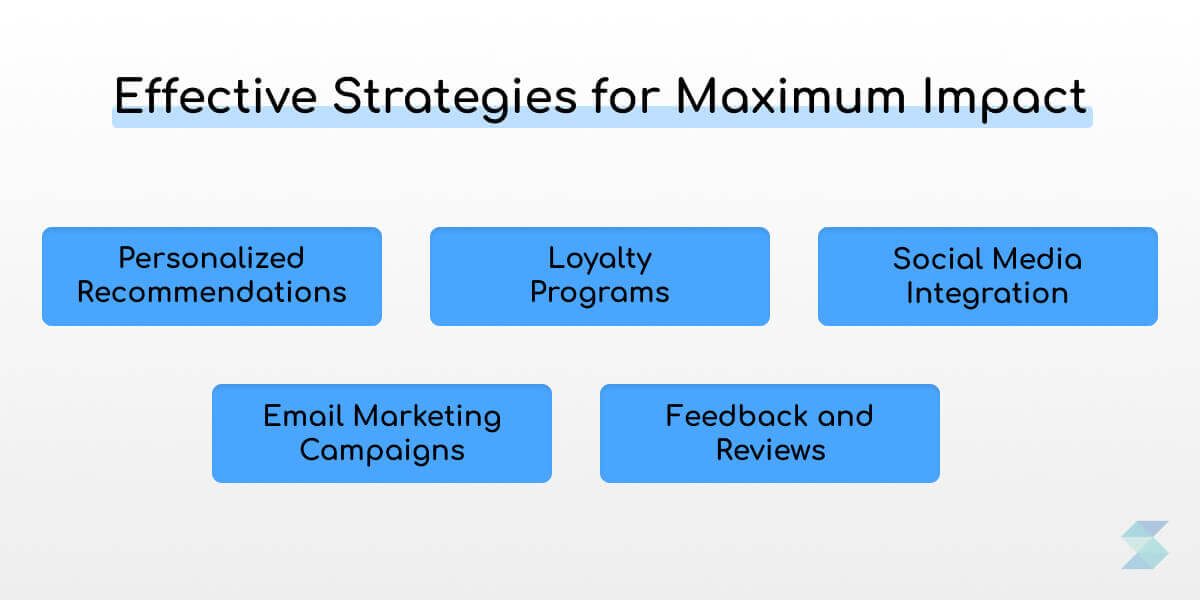
-
- Personalized Recommendations: Use data analytics and machine learning algorithms for personalized product recommendations based on users’ browsing and purchase history. Tailoring recommendations to individual preferences increases the likelihood of conversion and enhances the shopping experience.
- Loyalty Programs: Implement loyalty programs and reward systems to incentivize repeat purchases and foster customer loyalty. Offer points, discounts, exclusive offers, and VIP perks to encourage ongoing engagement and retention.
- Social Media Integration: Integrate social media sharing and login functionalities to facilitate social sharing and word-of-mouth marketing. Encourage users to share their favorite products, reviews, and purchases on social networks to expand your brand’s reach and visibility.
- Email Marketing Campaigns: Develop well-optimized email marketing campaigns to nurture customer relationships, promote new products, and drive traffic to your app. Segment your email list based on preferences, user behavior, and purchase history to deliver relevant, personalized content that resonates with your audience.
- Feedback and Reviews: Solicit feedback and reviews from customers to gather valuable insights into their satisfaction levels, preferences, and pain points. Actively respond to reviews, address customer concerns, and demonstrate your commitment to customer satisfaction to build trust and credibility.
Continuous Optimization and Iteration
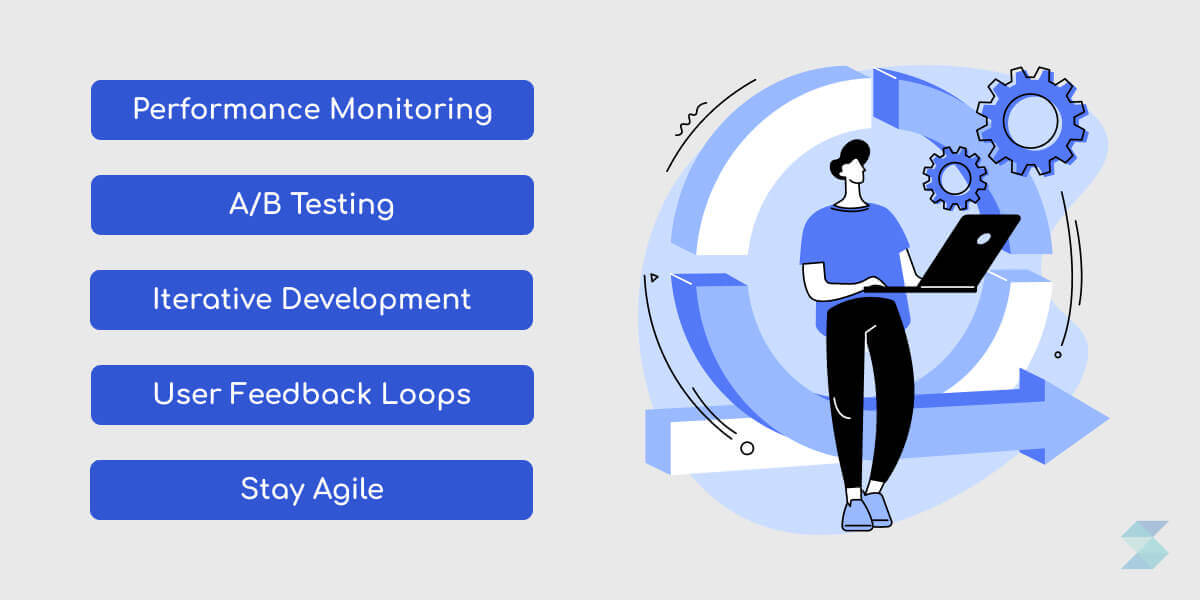
Building an eCommerce mobile app is just the beginning; continuous optimization and iteration are essential for long-term success and growth. Here are some key areas to focus on:
- Performance Monitoring: Regularly monitor your app’s performance metrics, including loading times, responsiveness, and crash rates, to identify areas for improvement and optimization. Utilize analytics tools and user feedback to prioritize enhancements and address pain points.
- A/B Testing: Conduct A/B tests and multivariate experiments to test different variations of app features, layouts, and functionalities. Measure the impact on user engagement, conversion rates, and revenue to identify winning strategies and refine your app’s design and user experience.
- Iterative Development: Adopt an iterative development approach to continuously iterate and enhance your app based on user feedback, market trends, and business objectives. Get regular updates and new features to keep your app fresh, relevant, and competitive in the marketplace.
- User Feedback Loops: Establish feedback loops with your users to gather insights, solicit suggestions, and address issues in real time. Encourage users to submit feedback, ratings, and reviews directly within the app to foster a sense of ownership and engagement.
- Stay Agile: Embrace an agile mindset and culture within your development team to adapt to changing market dynamics, customer needs, and technological advancements. Prioritize collaboration, flexibility, and responsiveness to deliver value-driven solutions and stay ahead of the competition.
Conclusion
Building a successful eCommerce mobile application requires careful planning, strategic execution, and continuous optimization to meet the evolving needs of your customers and business. By following the step-by-step guide outlined in this article and incorporating essential features and best practices, you can create a compelling and user-friendly app that drives sales, fosters customer loyalty, and positions your brand for long-term success in the digital marketplace.
Start Building Your eCommerce Mobile App Today!
Talk to an ExpertTags
Related Blog
Want to get started with App Development?
These applications are acquiring enormous prevalence by offering hands-on enterprise mobility solutions for organizations around the globe.
Start A ConversationLatest Blogs
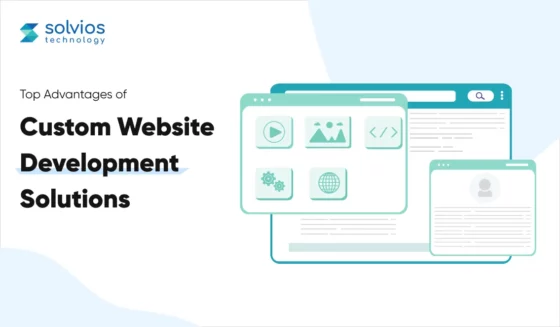
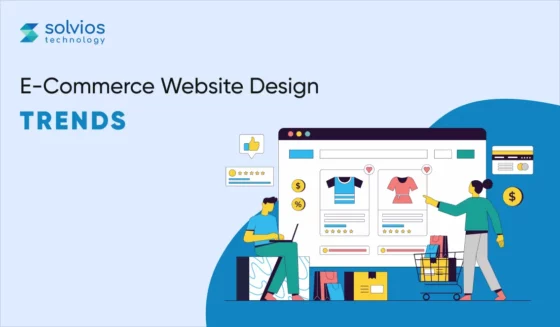
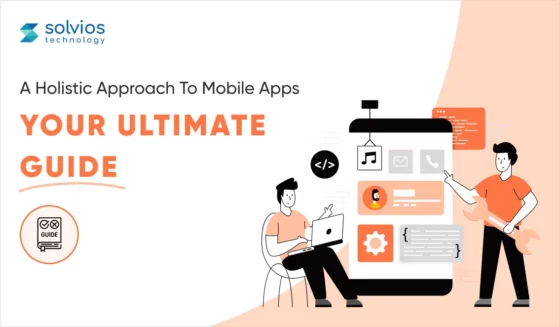

Custom Website Development Solutions: A Way to Achieve Long-term Success
Read More














